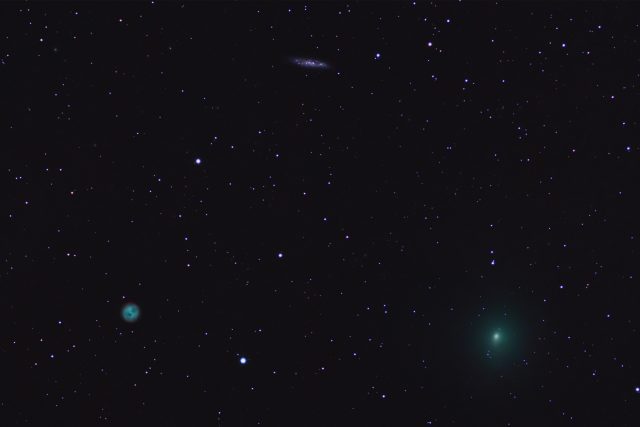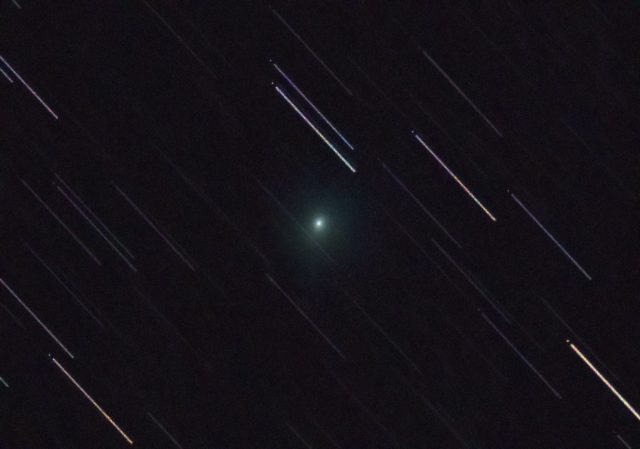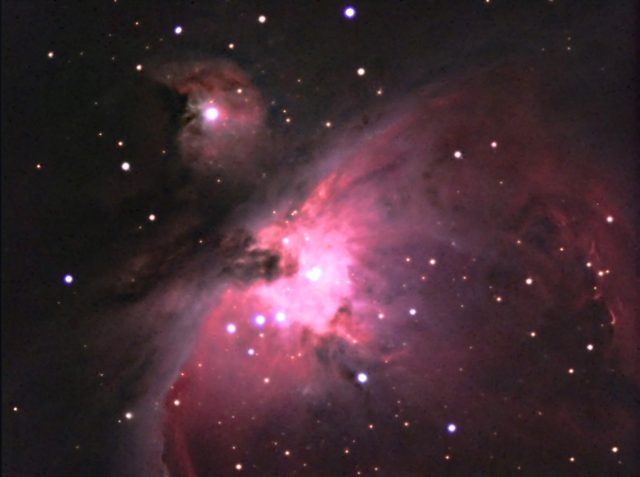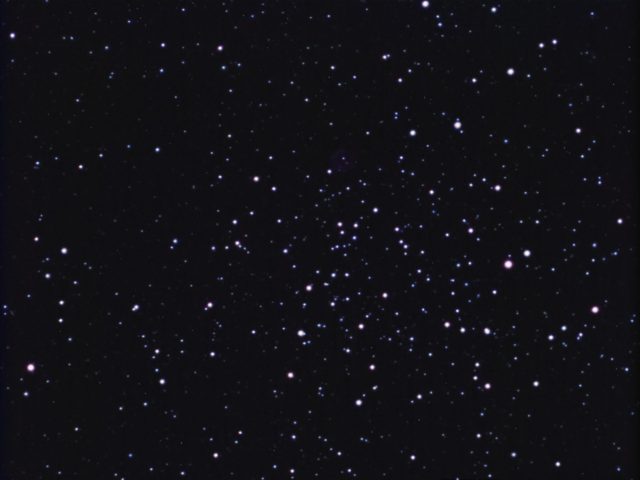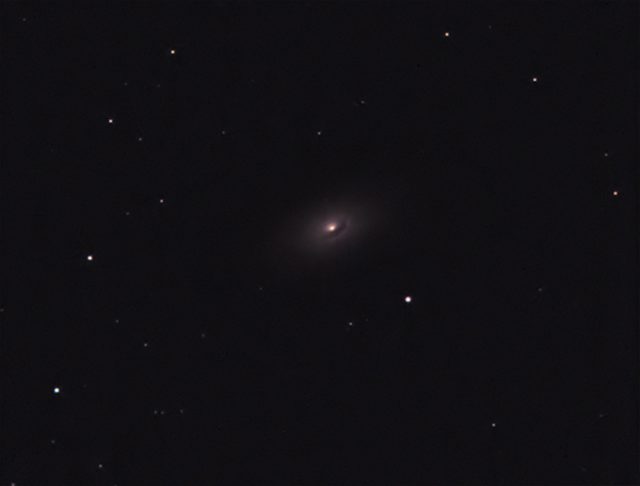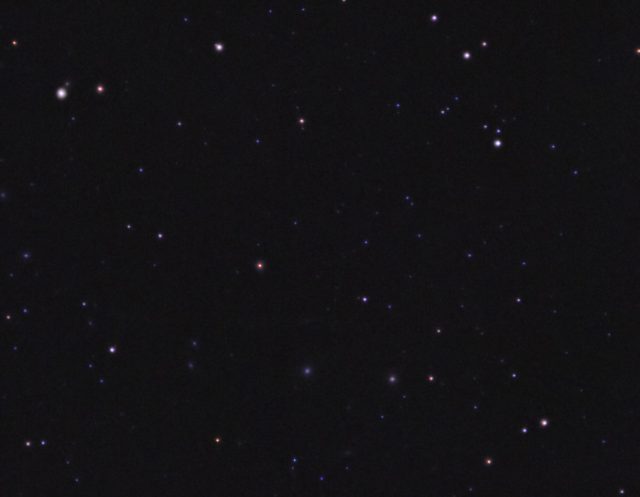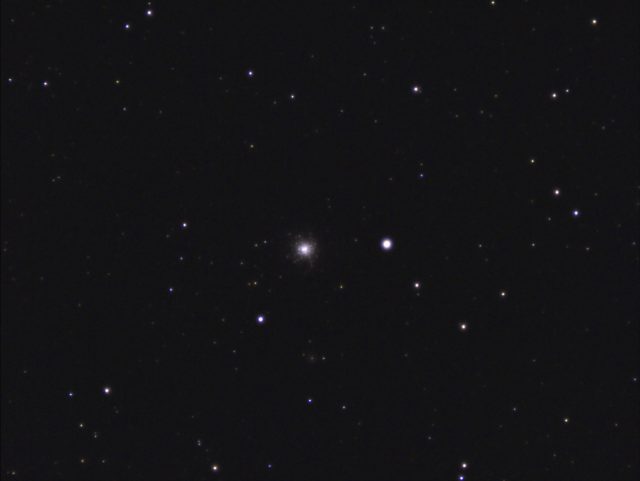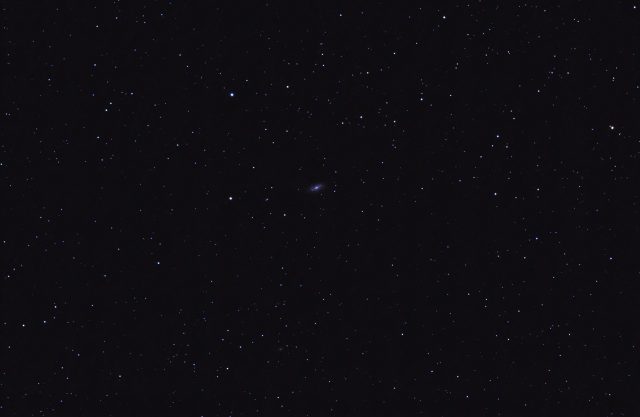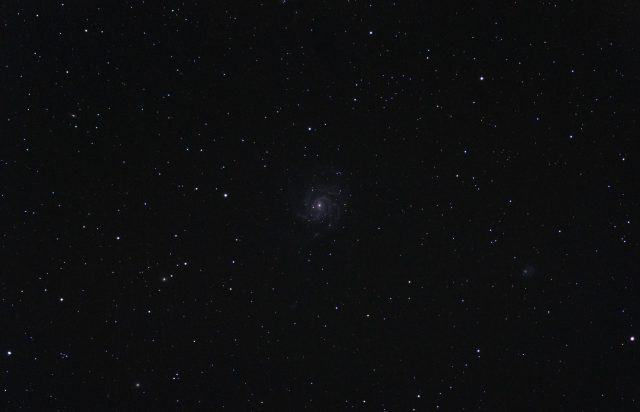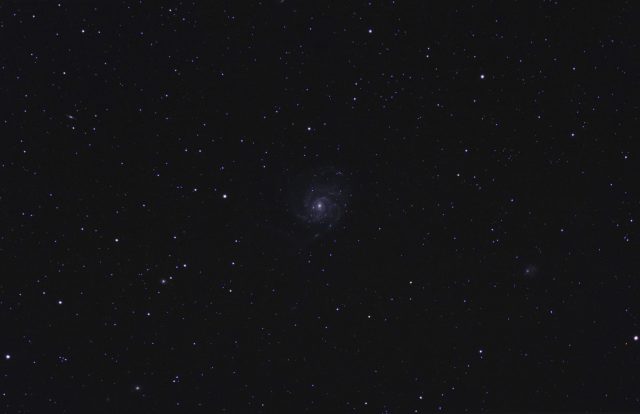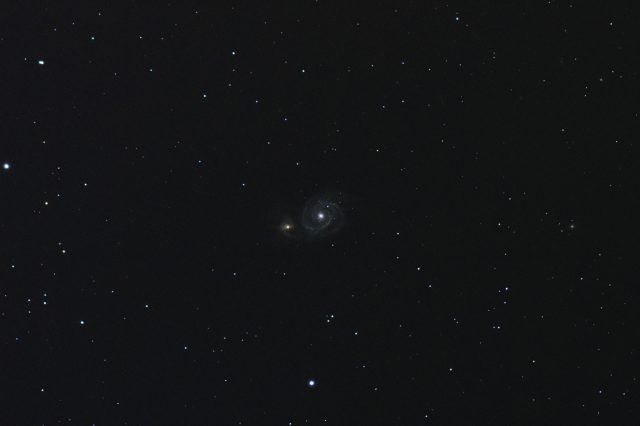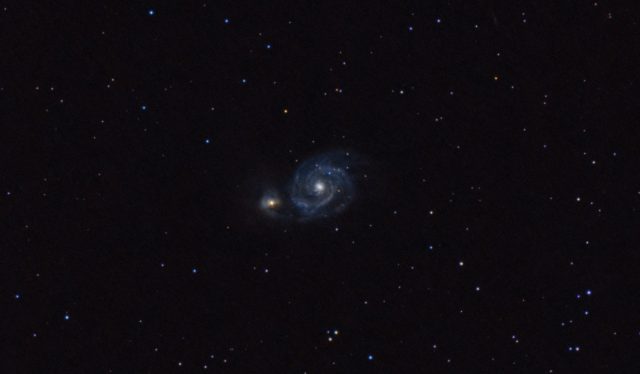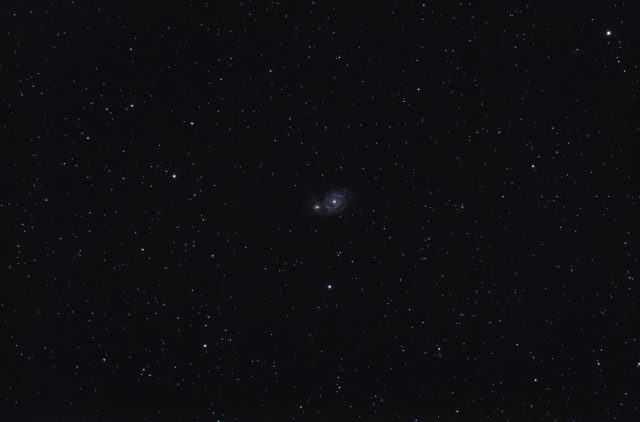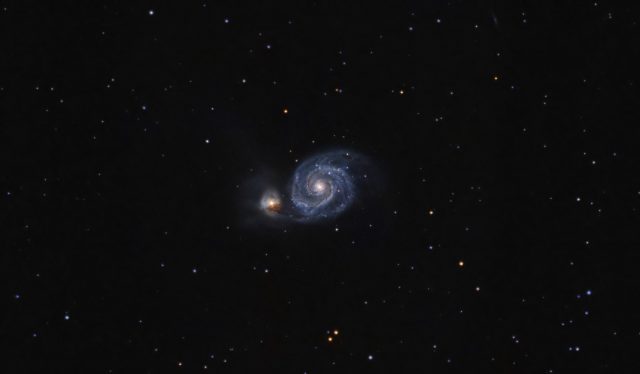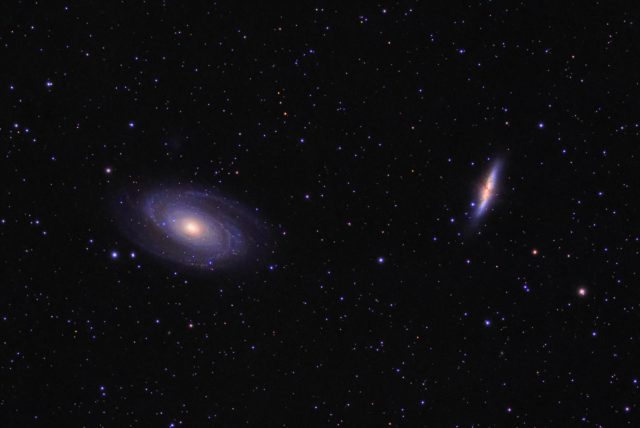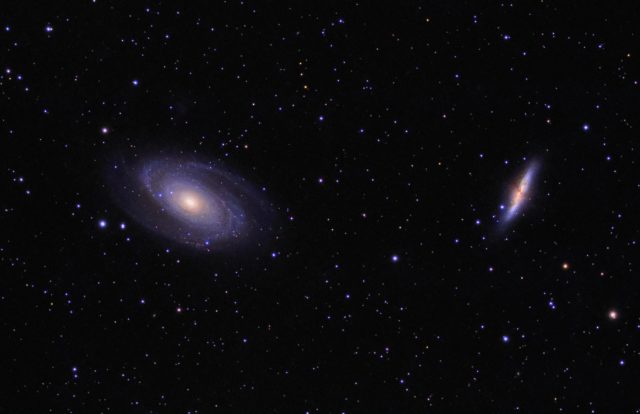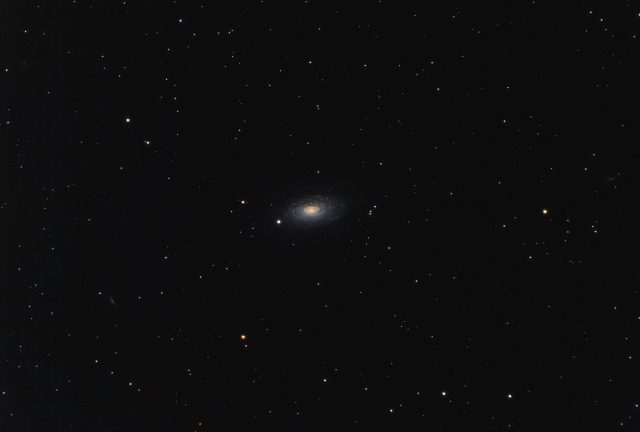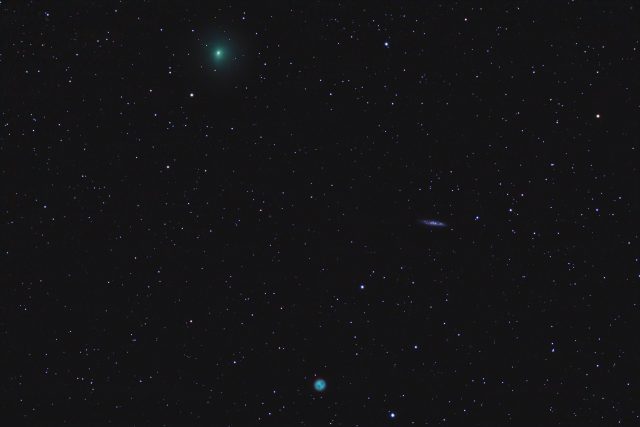
On the night following the encounter between M108, Comet 41P and the Owl Nebula, the comet was still in the field of view of my setup, so I went back for seconds. I just couldn’t pass up the opportunity to shoot a comet conjunction again!
I went with 3 minutes sub-images at ISO 200, since the 1 minute ISO 800 subs were too cooked by the LP for my taste. Unfortunately, the sky was not as transparent as the previous night and that half-stop of underexposure was needed to get around that. The trade-off was I didn’t get as much of the comet’s coma. Oh, well.
Also, at that exposure length, the comet’s pseudo-nucleus trailed a bit, since it is moving with respect to the Earth and stars and slowly picking up speed as time goes on, to boot. It was not enough to notice if I carefully over-exposed it a bit in processing to make it fatter, luckily. Check the star streaks version, which I did not overexpose, and you can see how far the comet moved in 3 minutes:
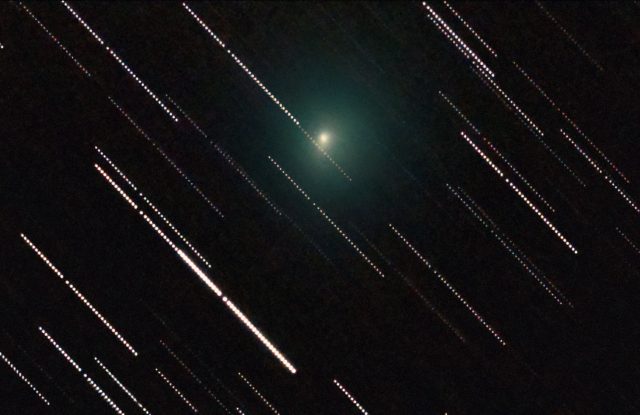
A Televue TV-85 w/0.8x focal reducer/field flattener, a Canon T3, my laptop running EQMOD, driving my Atlas EQ-G mount and PHD2 Guiding with an Orion StarShoot guider/Orion Ultra-Mini guidescope was some of the equipment used.

